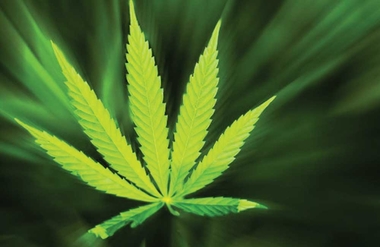A case for legalizing pot

by Rob Howard
Political Columnist
Oklahoma Attorney General Scott Pruitt is upset that Colorado allows the growing, marketing and use of marijuana. He finds it particularly annoying that pot, legally available in the neighboring state, is making its way into Oklahoma. So he, and the Nebraska Attorney General, filed a case with the US Supreme Court, asking permission to sue Colorado to reverse their legalization vote.
First, I just have to say, paraphrasing Casablanca, that I am “shocked, shocked” to find that marijuana from Colorado finds its way to Oklahoma. Well, not that shocked.
Considering the economic and social bonanza going on in Colorado since the legalization of the growing, sale, and use of marijuana, and the dismal state of Oklahoma’s budget, I think Pruitt should drop the lawsuit, and instead visit Colorado and find out how we can duplicate its success with legalization.
In 2014, retail cannabis sales raised some $76 million in tax revenue and fees for Colorado. Sales for that year totaled an estimated $700 million dollars, and is expected to be $1 billion this year. Assuming the taxes and fees remain at the same rate, Colorado should see $108 million in tax revenue this year.
But the opportunity for savings in government expenses is likely even more beneficial. According to Paul Armentano, Deputy Director of NORML, in a letter to the New York Times, “marijuana-related prosecutions fell dramatically in Colorado following legalization. Since 2012, marijuana possession prosecutions are down nearly 80 percent.
“Marijuana cultivation prosecutions are down 94 percent, and marijuana distribution prosecutions are down by 98 percent. In past years, these prosecutions would have cost the state several million dollars. Today, these cost savings can be reprioritized to address more serious criminal activities.”
The cost of marijuana prohibition takes a little effort to calculate, but it certainly includes the cost of additional police to enforce marijuana laws, of court processing and of incarceration. According to the Oklahoma Department of Corrections (DOC), it costs anywhere from $36 to $76 per day per inmate (2010 figures), or roughly between $1100 and $2400 a month.
Using a little math and some DOC figures, it costs between $94 million and $197 million to lock up drug related offenders each year. That doesn’t include the police and court system costs.
Other costs to the state include the lost productivity of those locked up – their income would yield tax revenue. And since about half of inmates have minor children, many of whom would be receiving welfare benefits while the parent is in prison, welfare costs are higher than they would be if the parent was not locked up, and could work and pay taxes instead.
A “back of the envelope” estimate, figuring that the approximately 7000 drug related prisoners would otherwise be employed at least at the minimum wage of $7.25, their sales tax collections alone would be around $5 million, and with other taxes considered could be much more.
But we don’t have to rely on guesses. Alaska in 2004 conducted an extensive study of the costs to government of the current prohibition of marijuana. They came to the conclusion that it cost the state a net $24 million a year.
Just taking the Alaska figures and multiplying by the difference in population, it costs Oklahoma around $126 million a year (in 2004 dollars). Adjusting for inflation, it would have cost $160 million in 2015.
We probably wouldn’t see Colorado’s level of tax benefit, because they have more people, but adjusting for population, we might see about $78 million, and would avoid $160 million in costs. It suggests revenue and expense savings combined of $238 million a year for Oklahoma.
What would the Oklahoma’s government do with $238 million dollars? I don’t know, given the venality of our legislature, but it equals 20 percent of the current $1.3 billion shortfall.
And yes, there are other issues to consider besides the economic savings to the state. Many people believe that marijuana is a ‘gateway’ drug – that use of it will invariably lead to harder and more addictive drugs. The Alaska study found otherwise.
They ended their study with this conclusion: “Prohibition does not succeed at its stated purpose, and in fact contributes to additional crimes being committed, and to use of other, more dangerous substances. Marijuana prohibition, using the most favorable figures in cost-benefit analysis, is a costly failure.”
It’s time for Oklahoma to legalize marijuana production, sale and use. And then I, and Attorney General Pruitt, can stop being “shocked.”
The Gayly, and it editors and staff, do not necessarily agree with the opinions expressed by columnists.
The Gayly- 4/19/2016 @ 9:25 AM CDT





